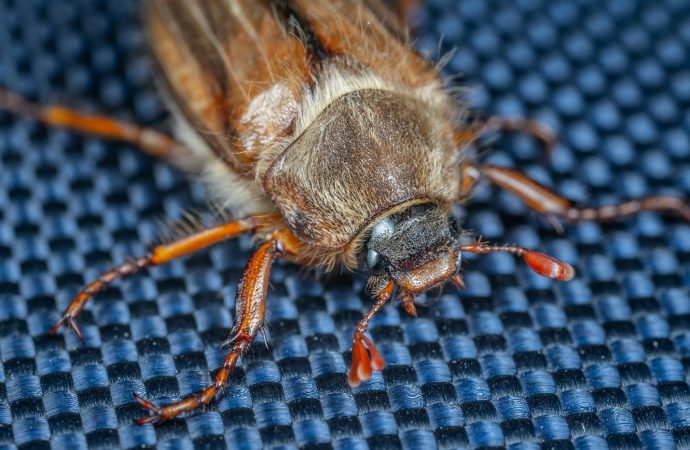Biomaterials in Product Design: Nature-Inspired Solutions Biomaterials represent a fascinating convergence of nature and technology, offering innovative solutions in product design that mimic natural processes and structures. As environmental concerns and sustainability take center stage in modern design, biomaterials provide a pathway to create products that are both functional and eco-friendly. This article explores the
Biomaterials in Product Design: Nature-Inspired Solutions
Biomaterials represent a fascinating convergence of nature and technology, offering innovative solutions in product design that mimic natural processes and structures. As environmental concerns and sustainability take center stage in modern design, biomaterials provide a pathway to create products that are both functional and eco-friendly. This article explores the role of biomaterials in product design, showcasing their benefits, applications, and the latest advancements in this exciting field.

Pexels.com
Understanding Biomaterials
Biomaterials are substances derived from biological sources or designed to interact with biological systems. They include both naturally occurring materials, like chitin and collagen, and synthetically engineered materials inspired by biological processes. The key to biomaterials is their ability to integrate seamlessly with natural systems, promoting sustainability and efficiency.
Key characteristics of biomaterials include:
- Biodegradability: Ability to decompose naturally without harming the environment.
- Sustainability: Use of renewable resources or processes that minimize environmental impact.
- Functionality: Performance characteristics that are inspired by natural systems and materials.
Innovations in Biomaterials
- Biodegradable Plastics:
Traditional plastics contribute significantly to environmental pollution due to their non-degradable nature. In response, researchers are developing biodegradable plastics from natural sources like corn starch, seaweed, and cellulose. These materials break down more quickly and leave less waste.
For instance, Mater-Bi is a bioplastic made from corn starch and other natural materials. It is designed to decompose within a few months in industrial composting conditions. Similarly, Seaweed-Based Plastics, developed by companies like AlgiKnit, use seaweed extracts to create packaging materials that are both sustainable and biodegradable.
- Mycelium-Based Materials:
Mycelium, the root system of fungi, is an innovative biomaterial that has gained attention for its versatility and eco-friendliness. It can be grown into various shapes and used as a sustainable alternative to conventional materials like foam and leather.
Ecovative Design is a pioneer in this field, producing mycelium-based products such as packaging materials and building insulation. Their products are not only biodegradable but also have the potential to reduce reliance on petrochemical-based materials.
- Plant-Based Composites:
Plant-based composites combine natural fibers with resins to create materials with unique properties. These composites are used in a range of applications, from automotive parts to consumer goods. They offer benefits such as lightweight, strength, and sustainability.
Hemp and flax fibers are commonly used in these composites. BMW, for example, uses hemp fibers in its car interiors to reduce weight and increase sustainability. The Green Design Institute is also exploring plant-based composites for use in construction and furniture design.
- Collagen-Based Materials:
Collagen, a protein found in connective tissues, is being explored for its applications in both medical and consumer products. Collagen-based materials are used in wound dressings, tissue engineering, and even as a replacement for animal-derived leather.
Edelweiss Technologies is at the forefront of this innovation, producing collagen-based biomaterials for medical applications. Additionally, Modern Meadow is developing lab-grown collagen for use in sustainable fashion and accessories.
- Algae-Based Materials:
Algae is a highly sustainable resource that can be used to create a variety of materials, from biofuels to bioplastics. Algae-based materials are lightweight, strong, and can be cultivated with minimal environmental impact.
Algiknit has developed algae-based yarns that can be used for textiles, offering a sustainable alternative to conventional fabrics. AquaSAC, another innovation, uses algae to create water-absorbing products for environmental and industrial applications.
Competitive Table: Biomaterials in Product Design
| Product/Company | Key Features | Strengths | Weaknesses | Market Position |
| Mater-Bi Biodegradable Plastics | – Made from corn starch <br> – Compostable | – Reduces plastic waste <br> – Environmentally friendly | – Higher cost <br> – Limited availability | Leading in bioplastics |
| Ecovative Mycelium-Based Materials | – Grown from fungi <br> – Biodegradable | – Versatile applications <br> – Reduces reliance on petrochemicals | – Requires specific growing conditions <br> – Limited product range | Pioneer in mycelium-based materials |
| BMW Plant-Based Composites | – Uses hemp and flax fibers <br> – Lightweight | – Sustainable <br> – Reduces vehicle weight | – Higher cost <br> – Limited to specific applications | Innovator in automotive materials |
| Edelweiss Collagen-Based Materials | – Derived from collagen <br> – Used in medical and fashion products | – Biocompatible <br> – Sustainable alternative to animal leather | – Expensive production <br> – Limited availability | Leader in collagen-based biomaterials |
| Algiknit Algae-Based Yarn | – Made from algae <br> – Lightweight and strong | – Sustainable <br> – Minimal environmental impact | – Higher cost <br> – Limited consumer awareness | Innovator in algae-based textiles |
Analysis Table: Biomaterials in Product Design
| Product/Company | Strengths | Weaknesses | Opportunities | Threats |
| Mater-Bi Biodegradable Plastics | – Reduces plastic waste <br> – Environmentally friendly | – Higher cost <br> – Limited availability | – Expansion into new markets <br> – Innovation in cost-effective materials | – Competition from traditional plastics <br> – Price volatility |
| Ecovative Mycelium-Based Materials | – Reduces reliance on petrochemicals <br> – Versatile applications | – Requires specific growing conditions <br> – Limited product range | – Growth in sustainable packaging <br> – Expansion into new industries | – Competition from other biodegradable materials <br> – Scaling challenges |
| BMW Plant-Based Composites | – Reduces vehicle weight <br> – Sustainable | – Higher cost <br> – Limited to specific applications | – Increasing demand for sustainable automotive solutions <br> – Technological advancements | – Competition from other automotive material innovations <br> – Market acceptance |
| Edelweiss Collagen-Based Materials | – Biocompatible <br> – Sustainable alternative to animal leather | – Expensive production <br> – Limited availability | – Growth in sustainable fashion <br> – Advances in lab-grown materials | – Competition from other sustainable materials <br> – Price sensitivity |
| Algiknit Algae-Based Yarn | – Sustainable <br> – Minimal environmental impact | – Higher cost <br> – Limited consumer awareness | – Expansion into new markets <br> – Increased demand for eco-friendly textiles | – Competition from synthetic and other natural fibers <br> – Limited consumer adoption |
Conclusion
Biomaterials are revolutionizing product design by offering nature-inspired solutions that address environmental challenges and promote sustainability. From biodegradable plastics and mycelium-based materials to plant-based composites and algae-based yarns, these innovations are paving the way for a greener future. As technology advances and consumer demand for sustainable products grows, the role of biomaterials in shaping a more eco-friendly world will continue to expand, offering new opportunities and challenges for industries worldwide.
















